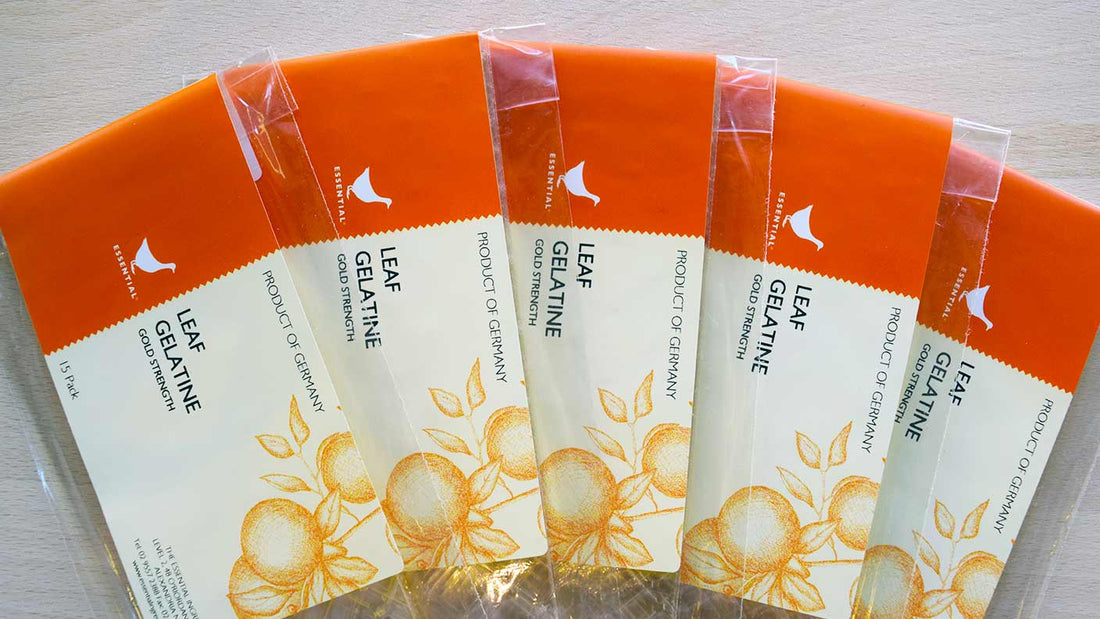
How to use Gelatine Sheets
Last updatedWithout gelatine an entire chapter of culinary history simply would not have occurred. This flavourless, colourless and odourless ingredient has been used since the mid 18th century and continues to be the leading molecular component used around the world in both domestic and commercial kitchens. Gelatine’s ability to give structure and pleasant texture to liquids is unparalleled, but for some it can cause more problems than it solves. This needn’t be so and in order to demystify this humble ingredient we have prepared the guide below.
Gelatine Measurements
One teaspoon of Gelatine Powder = 3.3 grams
One Gold Leaf = 2.2 grams
One Titanium Leaf = 5 grams
Ratios of gelatine to liquid
Firm Jelly: use 7 grams of gelatin to 250ml of liquid
Tender Jelly: use 7 grams of gelatin to 500ml of liquid
Delicate Jelly: use 7 grams to 750ml of liquid
How to prepare your gelatine
Gelatine powder is perhaps the easiest to come by and the simplest to mix through the liquid you are trying to set. It does not require soaking but will require constant stirring so as to avoid clumping of the gelatine crystals. Add the required amount of gelatine powder to the cold or room temperature liquid mass and slowly raise the temperature as indicated by the recipe you are using. Do not allow the liquid mass to boil. Stir continuously.
Gold leaf gelatine gives superior results particularly in dairy based desserts like panna cotta and desserts containing alcohol like champagne jellies. Titanium leaf gelatine is especially advised to be used when incorporating, liqueurs or spirits into your recipe or making savoury jellies such as aspic. If you are using cooked fruits in your recipe then gold strength gelatine is adequate, but when using fresh fruits it is better to use titanium strength gelatine as the acidity of the fruit can counteract the hydrocholoidal action of the gelatine. Soak the required amount of leaf gelatine in cold water for 1 minute then remove excess water before adding to your liquid mass. Soaking the leaves allows them to easily dissolve into the mix with minimal agitation. Soaking also helps to achieve a smooth and/or creamy texture.
Hot tips for cool results
-
Any recipe containing gelatine must rest in a chilled environment for at least 8 hours before serving.
-
If you find your finished product is not as set as you would like you can add more gelatine to the mix by applying heat and melting the mix down.
-
Acidity is the enemy of gelatine, so be aware that citrus, alcohols and vinegars will determine which gelatine to use and will alter the ratios of gelatine to liquid mass.
-
Patience is rewarding and a slow approach to incorporating gelatine into a mix will yield better results. Stir slowly, be gentle with heat and allow your jellies to rest.






